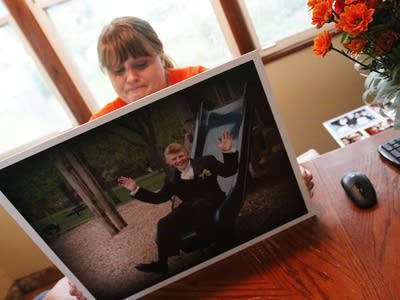Advocates renew push for mental health education after recent suicides
Go Deeper.
Create an account or log in to save stories.
Like this?
Thanks for liking this story! We have added it to a list of your favorite stories.

Following recent teen suicide deaths in Minnesota, mental health advocates are calling for a renewed effort to teach adolescents about depression and other mental health issues -- including suicide -- so that the next one might be avoided.
"Most schools don't have a great mental health curriculum," said Lisa Hanson, a health teacher at Red Wing High School.
Hanson received special training in mental health education at Johns Hopkins University in Baltimore after a student at the school killed himself a few years ago. She said there's a huge difference between what she had been teaching students before and what she teaches now after completing the training.
"What a typical health textbook might say is suicide is common because of pressure and stress," Hanson said.
Turn Up Your Support
MPR News helps you turn down the noise and build shared understanding. Turn up your support for this public resource and keep trusted journalism accessible to all.
Instead, Hanson said students need to learn about mental illness and begin thinking about it as a condition that requires treatment, just like physical health ailments such as diabetes. Understanding that might make them more likely to ask for help or seek help for a friend, Hanson said.
Even if the curriculum were improved in health classes, advocates say another problem is that health isn't a requirement in all schools.
The state allows local districts to decide whether to require health. In Red Wing, for example, seventh graders are required to take a health class that includes mental health education, but for high school students the class is optional.
But Charlie Kyte, executive director of the Minnesota Association of School Administrators, said most students in Minnesota have a health class in eighth and tenth grade, and he said mental health is usually a part of the curriculum.
Kyte noted that if officials decided more mental health education is needed, more school days would have to be added to the calendar.
Advocates said schools should fit it in somewhere, even if it's during a school assembly. A Twin Cities-based advocacy group called Suicide Awareness Voices of Education (SAVE) visits schools throughout the year to make presentations in health classes or at school assemblies.
"We talk about the warning signs of suicide, the risk factors and the things that put people at greater risk of maybe dying by suicide," said Daniel Reidenberg, the group's executive director. "We also talk about the importance of not keeping secrets and how important it is to let another person to know if you hear about someone who might be thinking about suicide."
Reidenberg said he wishes suicide prevention was taught in all schools, but he said that's far from being the case.
"Often what we find is that a school will only offer some kind of class after a suicide has occurred, unfortunately," he said. "While that's good and it helps other students in the future, we've also lost someone at that point."
Students at Woodbury High School, Mounds View High School and several schools in the Anoka-Hennepin school district have taken their lives in the past year. The latest suicide death was a student at Oak-Land Junior High just this week.
On average, 40 young people commit suicide each year in the state, according to the Minnesota Department of Health. The total number of suicides so far in 2010 isn't yet available, the health department said.
High school and middle school students in the Anoka-Hennepin school district, which has lost seven teens to suicide in the past year, requires a health class in both middle school and high school, and both contain a mental health component.
Even if students learn about depression and the warning signs of suicide in school, there's no guarantee they'll be able to stop a friend who's about do it.
Sue Abderholden, director of the National Alliance on Mental Illness in Minnesota, said the hardest thing about teen suicide is that teens are impulsive. That means the typical warning signs might not be there, she said.
"The impulsivity of the teenage brain makes it difficult to be able to identify when this is happening," Abderholden said.
Abderholden said it's important to consider a variety of factors when thinking about prevention, such as kids' access to mental health services or training for teachers to identify students who are depressed or anxious.
"I think there's always more that we can do," she said.




